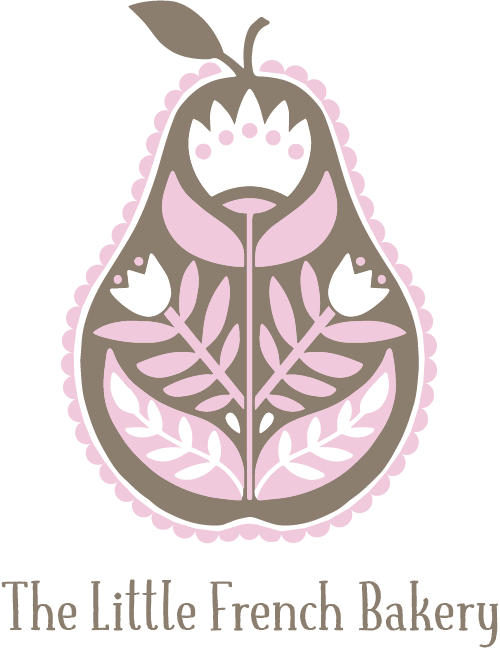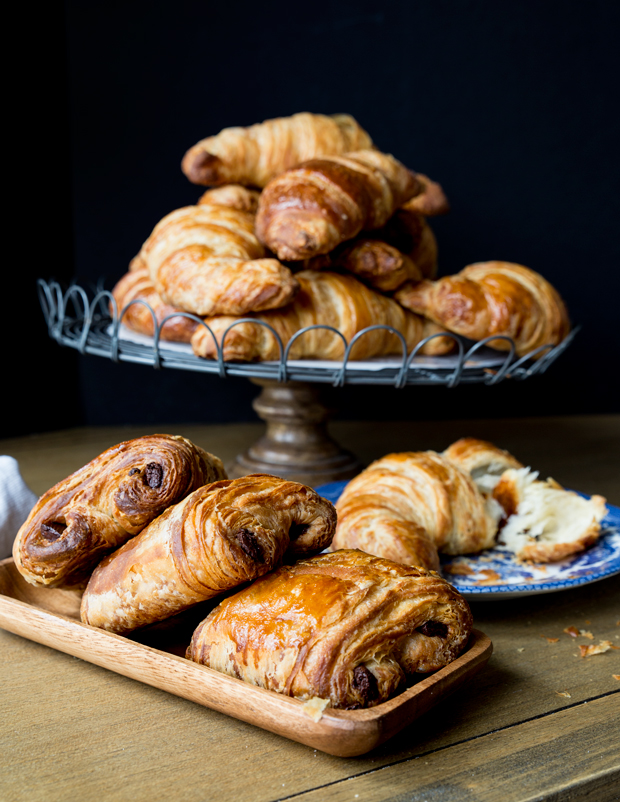It’s July 14th and Bastille Day in France. What could be more French than making croissants?
But first a history lesson. I’ve turned to the Encyclopedia Britannica:
Bastille Day, in France and its overseas départements and territories, holiday marking the anniversary of the fall on July 14, 1789, of the Bastille, in Paris. Originally built as a medieval fortress, the Bastille eventually came to be used as a state prison. Political prisoners were often held there, as were citizens detained by the authorities for trial. Some prisoners were held on the direct order of the king, from which there was no appeal. Although by the late 18th century it was little used and was scheduled to be demolished, the Bastille had come to symbolize the harsh rule of the Bourbon monarchy. During the unrest of 1789, on July 14 a mob approached the Bastille to demand the arms and ammunition stored there, and, when the forces guarding the structure resisted, the attackers captured the prison and released the seven prisoners held there. The taking of the Bastille signaled the beginning of the French Revolution, and it thus became a symbol of the end of the ancien régime.
https://www.britannica.com/topic/Bastille-Day
As I’ve shared with you, I’m gathering the equipment and computer skills to start creating videos and online classes. Croissants are very high on my list for first classes. I’ve got nearly everything ready and just need to walk over to the bakery building, set up my camera and mic and get started. I’m a little nervous (okay, more than a little) to get in from of the camera. I know you’ll all be on the other side cheering me on, so what is there to lose? Well…..
Let’s move on to the recipe on this special French holiday. By the way, I’ve posted about Croissants before, so some of the photos may look familiar.
Crossaints are near and dear to me. We learned to make croissants during the Viennoiserie section of the Cordon Bleu’s pastry course. Based on the word Vienna, it is thought that Marie Antoinette (who was from Vienna) brought bakers to Versailles, thus the name. In France there is a division of labor between the boulanger (bread baker) and patisserier (pastry chef). In the case of croissants, both are skilled in Viennoiserie, the most familiar group of pastries.
Some of you have heard this story before. It was a beautiful sunny morning at Le Cordon Bleu. The windows were open, the sun was streaming in, and we had finished our lecture and headed into the kitchen. As I rolled the croissant dough, I had “a moment”. I stood back and took it all in. I was standing in Paris, making croissants under the direction of one of the best French pastry chef at this incredible school. I didn’t want to ever forget this moment. I batted back the tears of happiness, grabbed my camera (film that is… pre-digital), and snapped a photo of my work space. I’ll look around and see if I can it, and I’ll be sure to share. Have you ever had one of those moments?
Upon returning home, my croissants failed miserably, time and time again. I would get everything just right, and when the dough went into the oven, the butter would come weeping out, nearly deep frying my beautiful pastries. I was using good, but not great butter. It wasn’t just me, so of my classmates were struggling too. What were we doing wrong?
Enter, better butter and Peter Reinhardt. If you’re buying butter, pay close attention the butter fat. You’ll want at least 83% fat. If it doesn’t tell you the fat content on the label, it’s not 83%. If the price is reasonable, it’s not 83%. High fat butter cost more, and is worth every cent. Peter adds one extra tip. He has you pound flour in to the butter which help “dry “ the butter making it much less likely to weep from the dough. I’ve adopted this technique in addition to using beurre sec (dry butter) or high fat butter.
The recipe start the day before creating the dough. I simply add all the ingredients in to the bowl of my stand mixer and mix until combined. I give it a few kneads on the floured counter top and then place in an oiled boil covered with plastic wrap overnight in the refrigerator.
The next day is when the magic happens. You’ll pound the butter and flour together and laminate (layer) the dough and butter through a series of folds and turns. This is where a video will be very handy!
I like to keep the room right around 70 degrees F, so I don’t have to return the dough to cool between turns. It’s firm, but not hard so I don’t have to put too much pressure on the dough to roll.
Croissant dough can make several kinds of pastry including croissants, pain au chocolat, pain au raisin, and morning buns. Morning buns a very popular in Madison and were a staple at the Ovens of Brittany in the 70’s and 80’s. I’ve included the recipe for them at the end of the croissant recipe.
When you’re shopping for butter, here are a few I suggest:
Organic Valley Cultured Unsalted 84% (it comes in 1/2 pound blocks), Plugra, and Lands of Lakes for Baking (check for the butterfat listed on the box). Kerrygold is good, but is generally salted. It’s also creamier and while delicious may be tricky for a beginner.
Here’s the PRINTABLE VERSION
Croissants and Pain au Chocolat
Makes about 15 croissants or pain au chocolat
For the Dough:
5-5 1-4 cups all purpose flour (600 gms)
2 tsp salt (10 gm)
1/3 cup sugar (56 gm)
1 TBSP instant yeast
6 1/2 oz cold milk ( 200 gm)
1 cup water
2 TBSP soft butter
For the Folding Butter:
3 sticks cold (1 1/2 cups) unsalted butter, the best you can find
2 TBSP flour
1 egg for brushing the croissants
chocolate batons or bittersweet chocolate pieces for pain au chocolat
For the dough:
With a stand mixer fitted with the paddle or by hand, mix the ingredients (except cold butter and 2T flour) until shaggy.
Gently knead for 1-2 minutes until smooth. Dough will be sticky. Place in lightly oiled bowl, covered with plastic wrap and chill overnight.
The next day, cut the folding butter into ½ inch pieces, sprinkle with the 2 TBSP flour and pound between two pieces of parchment with a rolling pin or beat in mixer with flour until smooth. Be sure to keep the butter cool. Shape into a 6 x 6 inch square about ½ inch thick. Return to the refrigerator if your butter feels too soft.
Place the dough on your lightly floured work surface. Roll the dough into a 7x14 inch rectangle. The smaller end nearest you. Place the butter square on the bottom half of the dough, and fold the top half over the butter. Lightly seal the edges, and tap with the rolling pin to even out the thickness.
Roll the dough, keeping about the same width, to 15 inches in length. Fold the dough into thirds, as you would a letter. Tap the dough to even the thickness, and turn again so the fold is on the left side. You’re just completed one turn!
Cover the dough lightly with plastic wrap and rest at room temperature for twenty minutes. If your room is warmer than 72 degrees, you can also rest the dough in the refrigerator.
Make two more turns (waiting at least 20 minutes between turns). Remember, if your room isn’t too warm, you don’t need to return to the refrigerator after each turn. Each time you fold the dough, you’re making more and more layers of butter and dough. When the butter heats and melts in the oven, the water in the butter will become steam. The steam pushes the layers of dough apart creating the flaky light layers of the croissants.
9. For croissants, roll the dough into an 6 x 18 inch rectangle. Cut triangles with a bottom width of about 3 inches. Roll the triangle to lengthen, cut a 1/2 inch slit on the bottom edge. Starting at the bottom, roll the dough towards the point, gently stretching the dough. Use both hands, splaying them apart as you roll. The slit will help widen the the dough and create a traditional shape. It will take about 3-4 rolls to reach the end. Place the croissants on a parchment lined baking sheet, point side down.
For pain au chocolat, roll rectangles measuring 3x4 inches. Place a chocolat baton or a line of chocolate in a row at the smaller ends. Roll/fold each end the dough toward the center, then each end once again. This will create a scroll shape. Place the dough smooth side up, rolls down, on the baking sheet.
10. Finish shaping the dough, cover and allow the pastries to rise at room temperature for 1 hour. While the dough is rising, preheat your oven to 350 degrees F. Just before baking, beat the egg in a small bowl with a fork. With a pastry brush, gently brush the tops of the croissants with egg wash. Try not let the egg to drip down the sides of the croissant onto the pan. This limits the puff in the oven.
11.Bake at 350 degrees F, for 30 minutes. Rotate pan ½ way through if necessary. Transfer pan to a cooking rack, and allow pastries to cool at least thirty minutes. If you serve the croissants too soon, the butter will not cooled, and the pastry will have a greasy feel and taste.
Morning Bun Variation
Roll Dough into rectangle (after two turns)
1 egg in 1 cup water
Brown Sugar/Cinnamon/Granulated Sugar (2 ½ tsp. cinnamon per 1 ½ # sugar half & half)
Cut 2 inch slices into well-greased muffin cups, cut side down. Will stand about ½ inch over top of muffin cup.
Bake immediately at 350 for 25-50 minutes
Rest a few minutes, then garnish by rolling buns in Sugar/Cinnamon mixture (1# sugar, 2 ½ tsp cinnamon).
Adapted from Artisan Breads Every Day, Peter Reinhardt
Let’s talk about rolling pins. The rolling pin I’m using in the photo is made of Pecia wood. The best translation I’ve come to understand is that it’s a fruit wood, perhaps Cherry. I LOVE these rolling pins. I pick them up when I’m in Paris at E. Dehillerin. They are hand made just outside of Paris. They last forever and get more and more beautiful. They are heavy and so smooth to the touch. The patina deepens over time. I’m probably rolling a tart in the photo, but the hand position is the same.
If you don’t have a French rolling pin, use whatever you have. Heck, even a wine bottle will do. Just be consistent with your pressure, and don’t massage the dough, be deliberate.
I hope you’ll give them a try. Be kind to yourself, it takes a little practice!
Enjoy a little bit a France, and talk to you soon!
Susan




